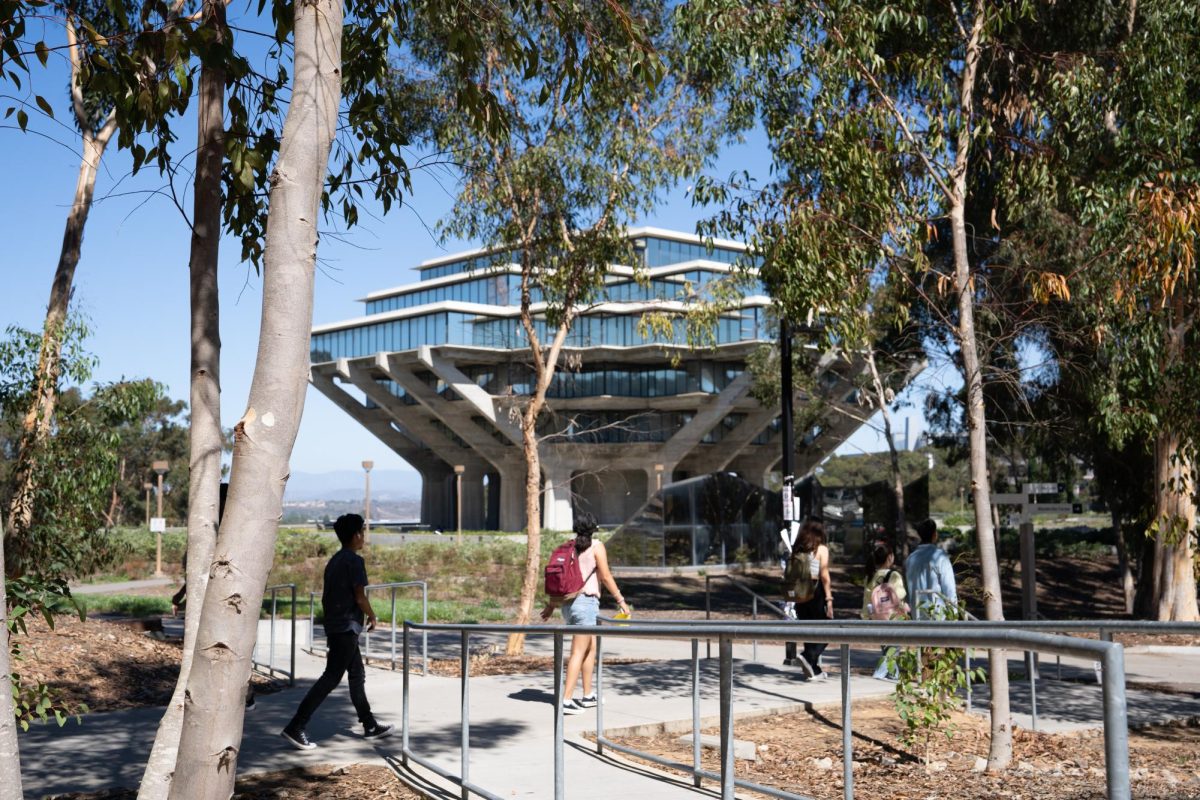New cosmological simulations performed on a supercomputer in Illinois have provided astrophysicists with the best indication to date of how the first star in the universe formed. The simulations, detailed in a paper appearing in the Nov. 16 issue of Science, suggest that the first star resulted from the gravitational collapse of a cloud of hydrogen and helium 100 times more massive than the sun.
Authors of the paper are UCSD physics professor and astrophysicist Michael L. Norman, Tom Abel of the Harvard-Smithsonian Center for Astrophysics and Greg L. Bryan of the Massachusetts Institute of Technology.
The results reported in Science were carried out on a 16-processor SGI Origin 2000 supercomputer at the National Center for Supercomputing Applications in Illinois. Current calculations are running on the 1,100-processor IBM Blue Horizon machine at the San Diego Supercomputer Center at UCSD.
Norman, who is also a senior fellow at SDSC, is eager to extend the calculations to a new, multi-center, networked TeraGrid of computers at NCSA, SDSC, Caltech and Argonne National Laboratory. The $53 million configuration, financed by the National Science Foundation, will have a peak speed of about 14 trillion calculations per second.
UC Regents approve modest employee salary increases
In an effort to compensate for budget constraints on UC-employee salary increases, the UC Board of Regents approved a modified deferred-compensation program Nov. 15 that will give all eligible employees an additional financial reward by way of a special retirement account.
Due to the recent economic downturn and resulting decline in state revenues, the University of California received significantly reduced state funding for 2001-2002 salary increases. The special account, called a Capital Accumulation Provision, will be available to all eligible UC employees who are members of the UC Retirement Plan. The C.A.P. being proposed will put the equivalent of 3 percent of the employee’s salary into a separate retirement account where it will earn interest until the employee begins to draw on retirement funds.
This is not the first time the University of California has offered employees a C.A.P. program. In the early 1990s, when the state’s budget was also under severe pressure, eligible employees received C.A.P.s to offset disappointing salary increases. To be eligible to receive the C.A.P. accrual credit, employees must be active UC Retirement Plan members on April 1, 2002.
National Academy of Sciences to hold symposium at UCSD
As part of the regional meeting of the National Academy of Science held on campus, leaders in the fields of oceanography, computer science, engineering and the atmospheric sciences will take part in symposium sponsored on Nov. 29 in the Price Center Theater at 1 p.m.
Topics covered in the symposium will include oceanography and the Internet.
V. Ramanathan and Jeremy Jackson, both of the Scripps Institution of Oceanography, will cover topics relating to oceanography and climate sciences.
Director of the Ludwig Center for Cancer Research, Webster Cavenee, will speak on cancer research in a lecture titled, “”Exploiting Mutations in Tumors for Targeted Therapy.””
Larry Smarr, director of the California Institute of Telecommunications and Information Technology will deliver a lecture on “”Empowering Scientific Research with the 21st Century Internet.””
The California Institute of Telecommunications and Information Technology will broadcast lecture through live streaming video between 1p.m. and 3:30 p.m. on their Web site, rtsp://132.239.50.152:554/encoder/nas.rm.
SIO researcher finds waves have become more powerful
Over the last 50 years, waves hitting Southern California have increased in size and intensity, especially in the winter, according to Scripps Institution of Oceanography researcher Nick Graham in a paper that appears in the recent edition of Bulletin of the American Meterlogical Society.
Henry Diaz of the National Oceanic and Atmospheric Administration co-authored the article.
Graham and Diaz hypothesize that the increases may be a result of warming sea surface temperatures in the tropics caused by global greenhouse warming and natural climate changes.







